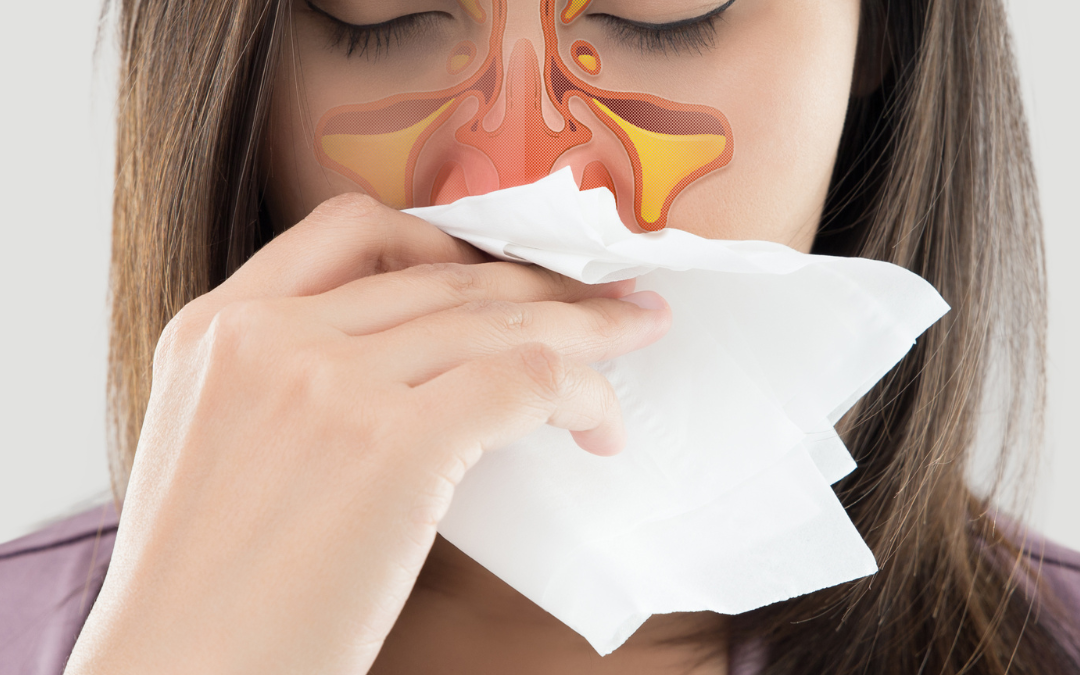Your home should be a place of comfort, but for many, it can be the source of ongoing sinus problems. Allergies, sinus infections, and other respiratory issues can be triggered or worsened by indoor allergens and environmental factors. If you find yourself frequently battling congestion, headaches, or sinus pressure, it may be time to look closely at your home environment.
In this blog post, we will explore common indoor allergy triggers that can affect your sinuses and offer tips on how to reduce their impact. By taking the right steps, you can help create a healthier indoor environment that supports better sinus health.
What Are Sinus Issues and How Do They Relate to Allergies?
Your sinuses are air-filled cavities located around your forehead, eyes, and nose. These cavities are lined with mucous membranes that help trap dust, pollen, and other particles, preventing them from reaching your lungs. When your sinuses become inflamed or irritated, it can lead to symptoms like:
-
Congestion
-
Headaches
-
Facial pressure
-
Postnasal drip
-
Coughing
-
Fatigue
-
Sore throat
Sinus issues are often linked to allergies. When your immune system overreacts to harmless substances like dust or pollen, it triggers inflammation in your sinuses. This inflammation can block your sinus cavities, leading to pain and pressure. Common indoor allergens that affect the sinuses include dust mites, mold, pet dander, and cockroach particles.
Common Indoor Allergy Triggers That Can Affect Your Sinuses
1. Dust Mites
Dust mites are microscopic creatures that thrive in warm, humid environments. They are often found in bedding, upholstered furniture, carpets, and curtains. These tiny pests feed on dead skin cells and can trigger allergic reactions in many people.
How Dust Mites Affect Your Sinuses: When dust mites are disturbed, they release tiny particles into the air, which can be inhaled. This can cause sinus inflammation and exacerbate allergy symptoms like sneezing, congestion, and sinus pressure. Over time, exposure to dust mites can lead to chronic sinus issues.
How to Reduce Dust Mite Exposure:
-
Wash bedding in hot water (130°F or higher) weekly.
-
Use allergen-proof covers on pillows and mattresses.
-
Remove carpeting in bedrooms and replace with hard floors or washable rugs.
-
Keep humidity levels in your home low to prevent dust mite proliferation.
2. Mold
Mold is a common indoor allergen that can worsen sinus issues. Mold spores are present in the air and can easily grow in areas with high humidity, such as bathrooms, kitchens, and basements. Common types of indoor mold include Aspergillus, Cladosporium, and Penicillium.
How Mold Affects Your Sinuses: Mold spores can be inhaled and cause allergic reactions in the respiratory system. This can lead to sinus irritation, congestion, and sinus infections. In some cases, prolonged exposure to mold can even lead to chronic sinusitis.
How to Prevent Mold Growth:
-
Use a dehumidifier to maintain humidity levels below 50%.
-
Fix leaks promptly to prevent water damage.
-
Clean and disinfect areas prone to mold growth, such as shower walls and bathroom ceilings.
-
Ensure proper ventilation in areas with high moisture, like the kitchen and bathroom.
-
Consider using an air purifier to reduce airborne mold spores.
3. Pet Dander
Pets, especially cats and dogs, are beloved members of many households. However, pet dander—tiny flakes of skin shed by animals—can be a significant allergen for people with sensitive sinuses.
How Pet Dander Affects Your Sinuses: Pet dander can trigger sinus congestion, sneezing, and inflammation in your sinuses. This is because pet dander particles are lightweight and easily become airborne, where they can be inhaled into the sinuses. Even people without pet allergies may experience sinus discomfort if they live with pets.
How to Minimize Pet Dander Exposure:
-
Keep pets out of bedrooms and off furniture.
-
Bathe and groom pets regularly to reduce the amount of dander they shed.
-
Use air purifiers with HEPA filters to trap airborne pet dander.
-
Clean floors and surfaces regularly to remove dander buildup.
-
Wash your hands after handling pets and avoid touching your face.
4. Cockroach Particles
Cockroaches are not only a nuisance but also a serious indoor allergen. Their body parts, saliva, and droppings can trigger allergic reactions in sensitive individuals. Cockroach allergens are particularly common in urban areas and homes with poor sanitation.
How Cockroach Particles Affect Your Sinuses: When cockroach particles become airborne, they can be inhaled into the sinuses, causing inflammation and sinus congestion. This can lead to chronic sinus issues, especially in people who are sensitive to these allergens.
How to Reduce Cockroach Allergens:
-
Keep food sealed in airtight containers.
-
Clean up food crumbs and spills immediately.
-
Seal cracks and crevices in walls and around windows to prevent cockroaches from entering.
-
Use traps and baits to control cockroach populations.
-
Consider professional pest control if you have a significant cockroach problem.
5. Household Cleaning Products
Many cleaning products contain chemicals that can irritate the sinuses. These chemicals can trigger allergic reactions and worsen sinus problems, especially when used in poorly ventilated areas.
How Cleaning Products Affect Your Sinuses: Harsh chemicals in cleaning products can cause sinus irritation, dryness, and congestion. Common ingredients like ammonia, bleach, and synthetic fragrances can be especially problematic for people with sensitive airways.
How to Minimize Exposure to Cleaning Product Chemicals:
-
Use natural cleaning products with fewer chemicals, such as vinegar and baking soda.
-
Choose fragrance-free or hypoallergenic cleaning products.
-
Ensure proper ventilation when using cleaning products, especially in small or poorly ventilated areas.
-
Wear a mask to protect yourself from inhaling fumes while cleaning.
6. HVAC Systems
Your home’s HVAC (heating, ventilation, and air conditioning) system can circulate allergens and dust throughout your home if not properly maintained.
How HVAC Systems Affect Your Sinuses: If your HVAC filters are dirty or clogged, they can release dust, pet dander, and mold spores into the air, which can trigger sinus issues. Poor air circulation can also contribute to humidity imbalances that foster the growth of mold and dust mites.
How to Improve HVAC Air Quality:
-
Change HVAC filters regularly (every 1-3 months).
-
Consider installing an air purification system with HEPA filters.
-
Schedule regular professional cleaning and maintenance for your HVAC system.
-
Keep your home’s humidity levels between 30-50% to reduce allergen growth.
If you continue to experience chronic sinus problems despite cleaning up your home environment, it may be time to consult with an allergy provider. At Premier Allergy, Asthma & Sinus Care, we can help identify the specific triggers affecting your sinuses and recommend the best course of treatment to relieve your symptoms.





